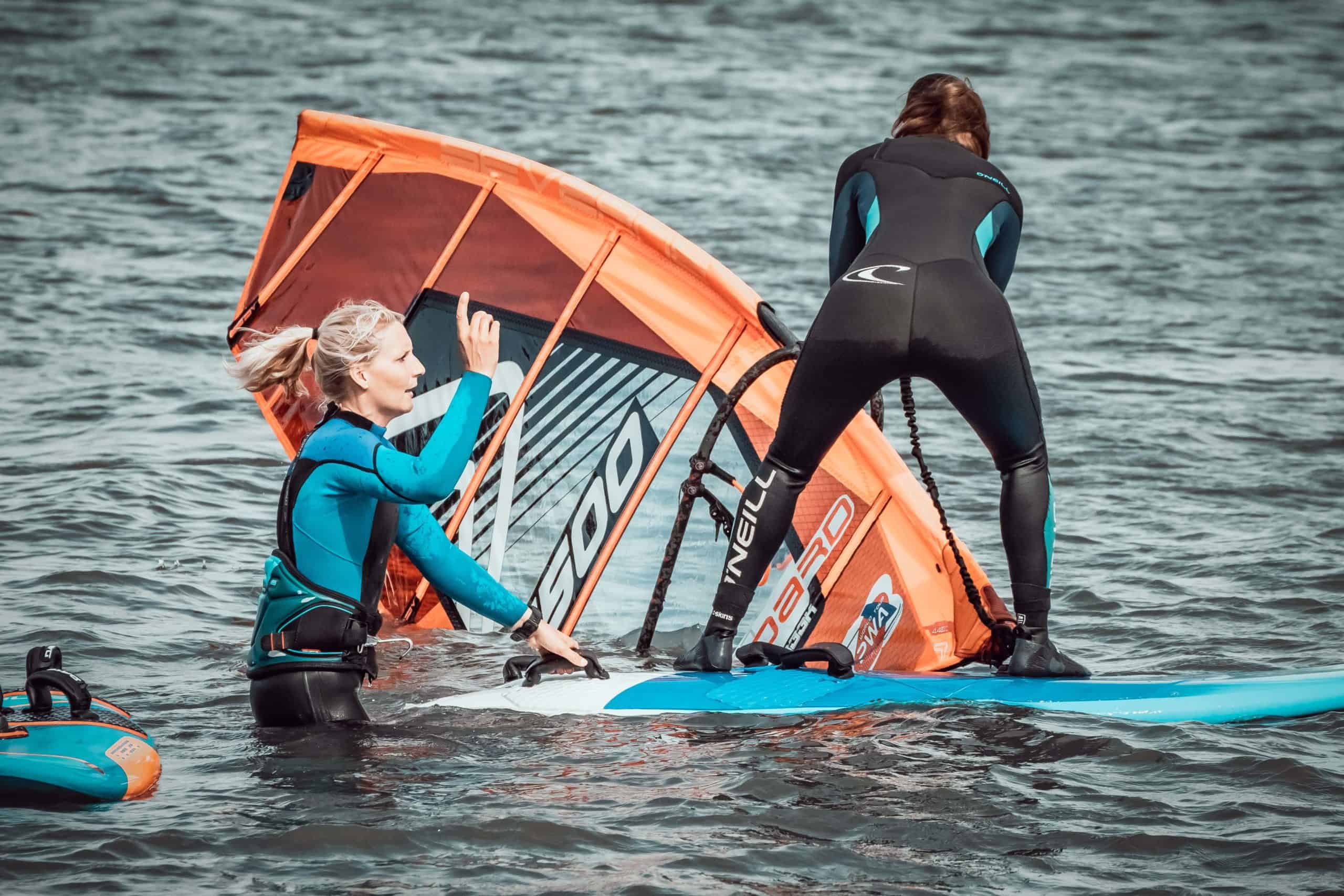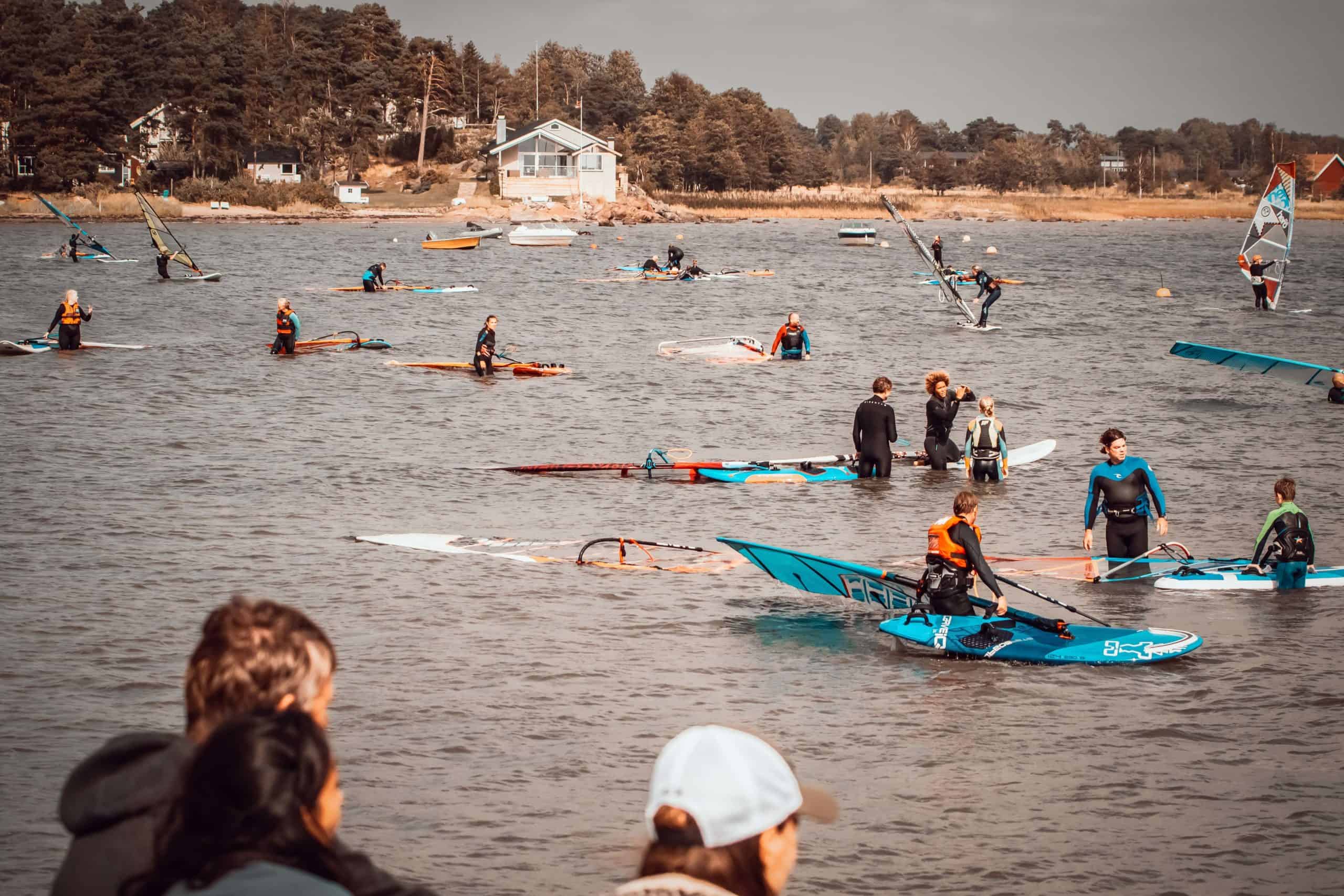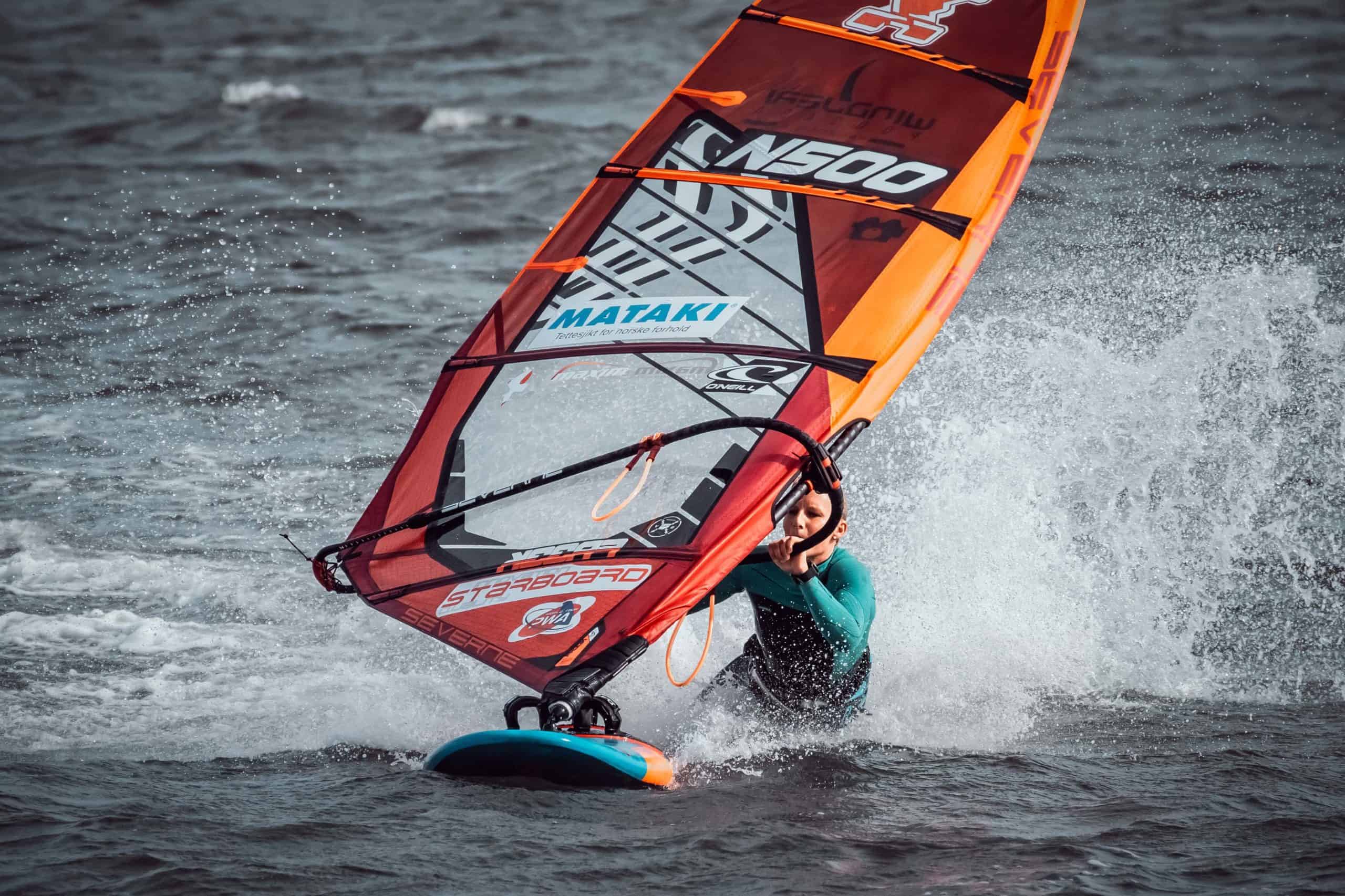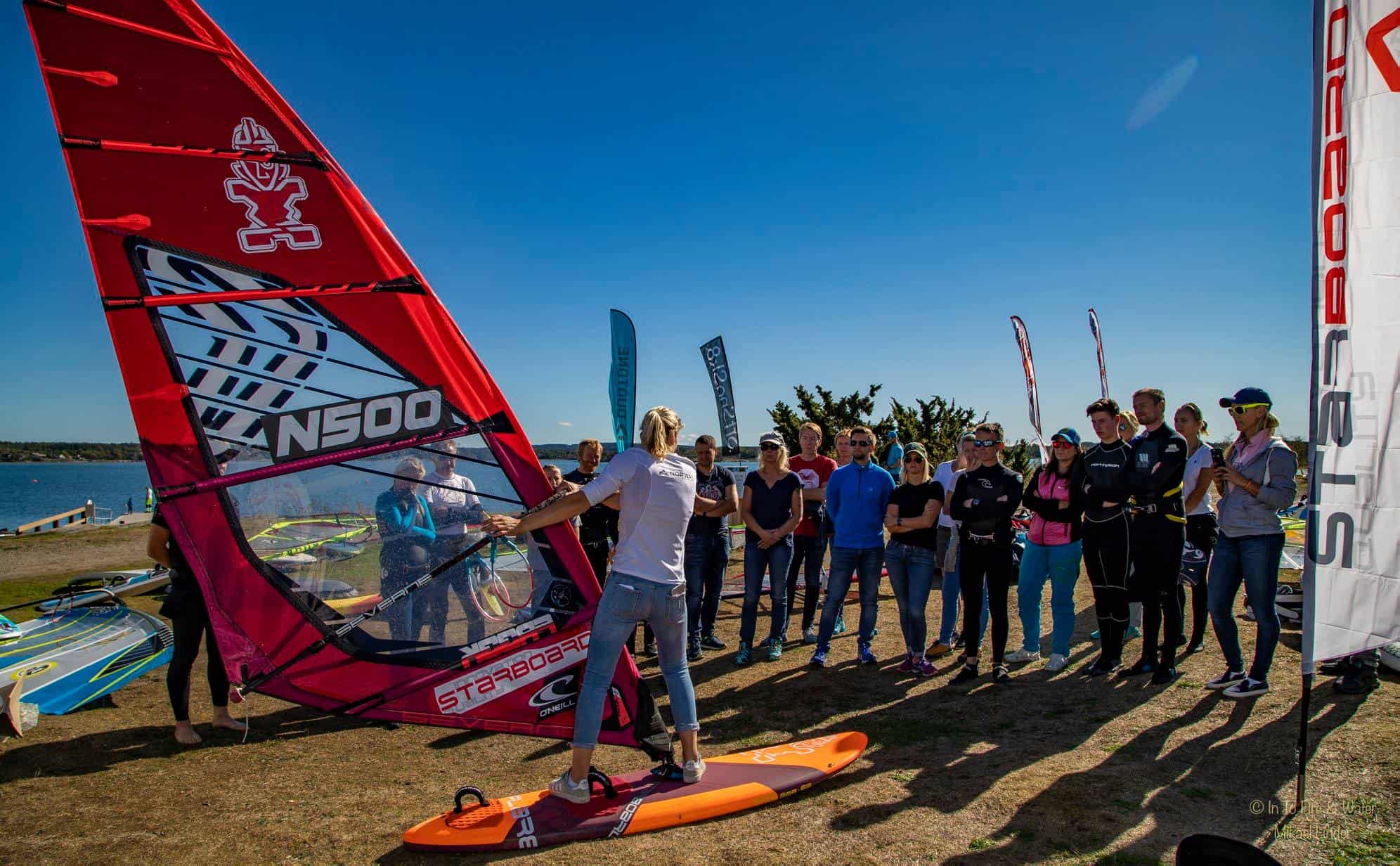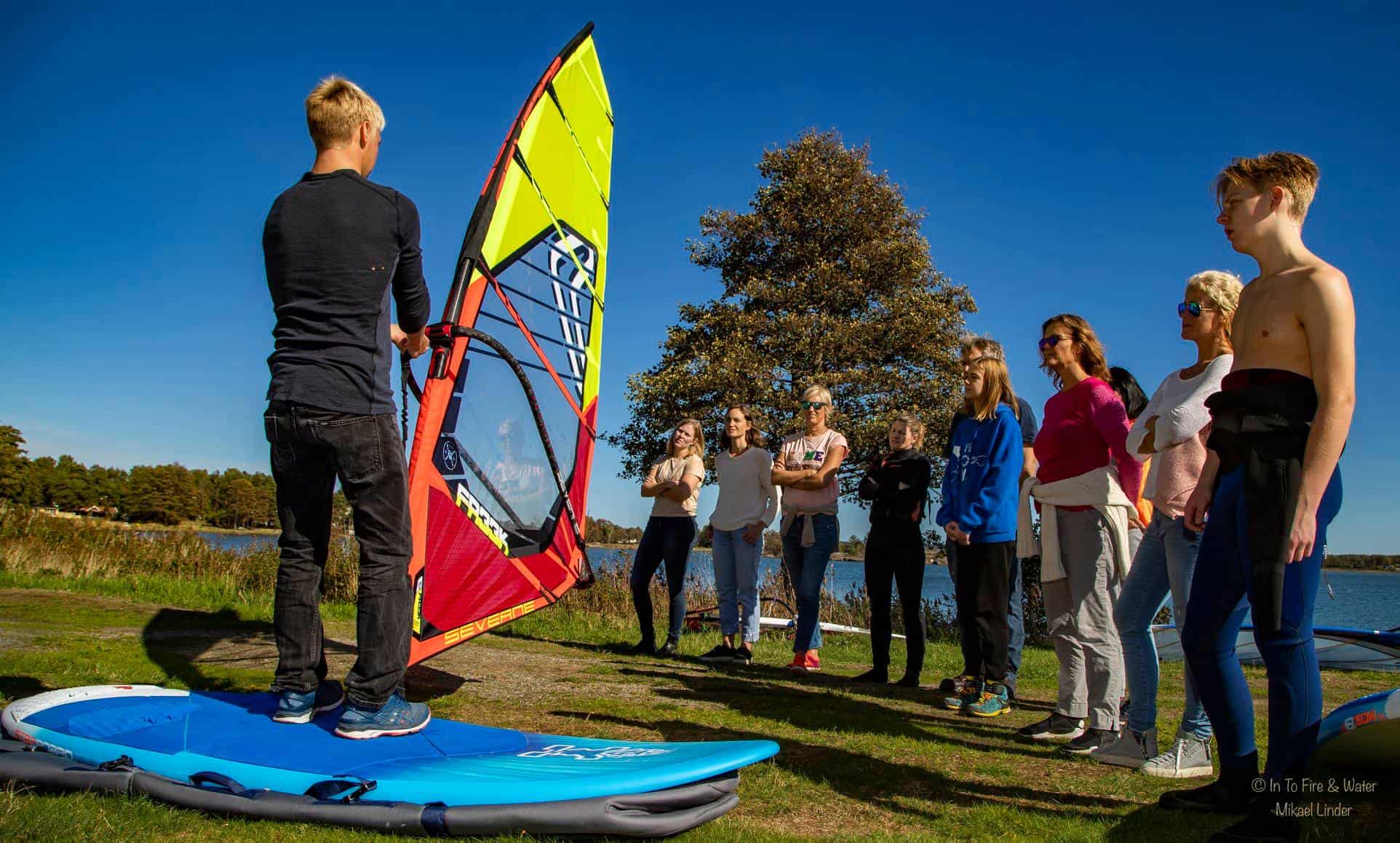Hi all!
My name is Oda Johanne, and I have been sailing for Starboard my whole professional windsurfing career. I compete in the PWA World Cup in freestyle, slalom and wave. I recently spent time on Aruba to train with team rider and good friend Sarah-Quita at her home spots. Due to COVID-19 I was stuck on the windiest spot in the world for about 110 days… I was extremely lucky in these world challenging times, as we were allowed to windsurf every day! Now, I am back in Norway, and like every year, I have plenty of windsurfing clinics. Besides training and competing I have a big passion for teaching windsurfing. I am trying to help my students with some tips and tricks so they can unlock their next level in windsurfing. Starboard has asked me to share some tips that I use during my windsurfing clinics.
MOST ASKED QUESTIONS DURING OUR CLINICS
HOW CAN I PLANE OUT OF A GYBE?
Sail as fast as you can, hand far back, hook out from the harness, back foot out of the strap, lean into the turn, look where you are going, for better balance bend your knees, try to sail a bit downwind while you flip the sail so you keep planing.
I WANT TO LEARN THE WATER START, BUT IT`S HARD TO GET THE SAIL OUT OF THE WATER
The easiest way to get the sail out from the water when you want to water start is to swim and hold the top of the mast. After grabbing the mast you swim backwards (with the wind in your back) while you lift the sail just above the water. Swim closer to the boom and hold onto the boom. To get the board in the right position, it helps to swim in the sailing direction with the rig in your hands and keep it above your head. Like that the board will be in the correct position and it will be easier to get your back foot on the board to water start.
I FALL WHEN I TRY TO TACK
When you jump around the mast to the other side during a tack, make sure to place the back foot that will become the new front foot almost on top/or in front of the mast base. I like to imagine that the back foot should take over the place of the first front foot in one step. There’s a lot of volume here, and if you lose balance it can help to push down on the boom. Imagine that the boom is connected to the mast and the mast base as your “3rd leg”.
IS MY LEVEL GOOD ENOUGH TO LEARN TO JUMP
If you can sail in straps and harness in control, go to a spot with small ramps or chops and go for it! I suggest you start jumping on boards no bigger than 115 liters. Make sure your straps are big enough so if you fall you will not twist your ankles. Hit the wave/chop, tuck in your back leg and sheet in the sail to fly. Making yourself small in the air will give you more control.
4 DIFFERENT TYPES OF CLINICS
EXCLUSIVE PRIVATE CLINIC
This type is a private course with only 1-5 participants. During these clinics, I train them the way I train myself when I windsurf.
- We watch videos of the trick/maneuver.
- We visualize the maneuver. Pretend you hold onto something similar as your boom and try to do the move on land.
- We go on the water and practice. Short runs to get more tries.
- We film almost everything so we can watch and see what went well and what needs to be improved/changed for the next session. After watching yourself windsurfing on video, and having someone who can help you analyze your technique, helps a lot. I would say this type of clinic speeds up your progress the most. To be aware of the mistakes early, so you don`t practice a maneuver with bad technique too many times, will help you learn your dream move faster than you think.
TEAM BUILDING
Another type of clinic I do is Team Building for companies. Due to a lack of time, I only do a few every year. I have had some of the biggest companies in Norway joining these clinics, and it`s fun for them to get to know a new sport like windsurfing. At the same time, doing a sport with your colleges make sure you have some fun topics to talk about in the lunch break at work.
BIG SOCIAL CLINIC
This type of clinic I have is a big group of intermediate windsurfers. It is really social and fun! I normally team up with Håkon Skorge. Together we can handle a big group of windsurfers. It`s normally arranged on a weekend with 2 days full of coaching. We do two sessions each day. When you teach so many sailors at the same time it`s important to choose the right spot. We normally go to a bay with shallow water. That makes it easy to stand and communicate with all of our students in the water. A lot of technique talk is also done at the beach. We make sure to know their windsurfing level ahead of the clinic. They tell us their goal for the clinic. Most of the time, out of 30 windsurfers, half of them will have the same level, so we always divide into 2 groups. Like that, the ones with a higher level don`t need to go through “how to waterstart”. Instead they learn how to plane out of a gybe and practice their first jumps or loops. When we are teaching more basic skills, one of the instructors are standing in the water at one spot. Like that the students know where to go to when they need some instructions. If they have a higher level we sail in front of them to show them the move they want to practice. And after we sail behind them to watch what they are doing. After a few tries, we give feedback so they know what to improve. Sometimes all they need to know is “THAT WAS A PERFECT JUMP, YOU ARE READY FOR THE LOOP NOW!”
ODA JOHANNE`S WINDSURFING FESTIVAL WITH CLINIC
Besides these 3 types of clinics, I`m arranging “Oda Johanne`s Windsurfing Festival” in Norway every year. We invite Sarah-Quita to join and we have done it 3 years in a row now. Last year was really amazing with almost 100 people joining our clinic during the festival. It was sunny, windy and a lot of happy windsurfers! It has grown really well and it`s always nice to gather the whole windsurfing community in Norway to this weekend. Besides windsurfing clinics we had a cafe, freestyle show right in front of the spectators. The biggest windsurfing shops had gear people could test available the whole weekend.
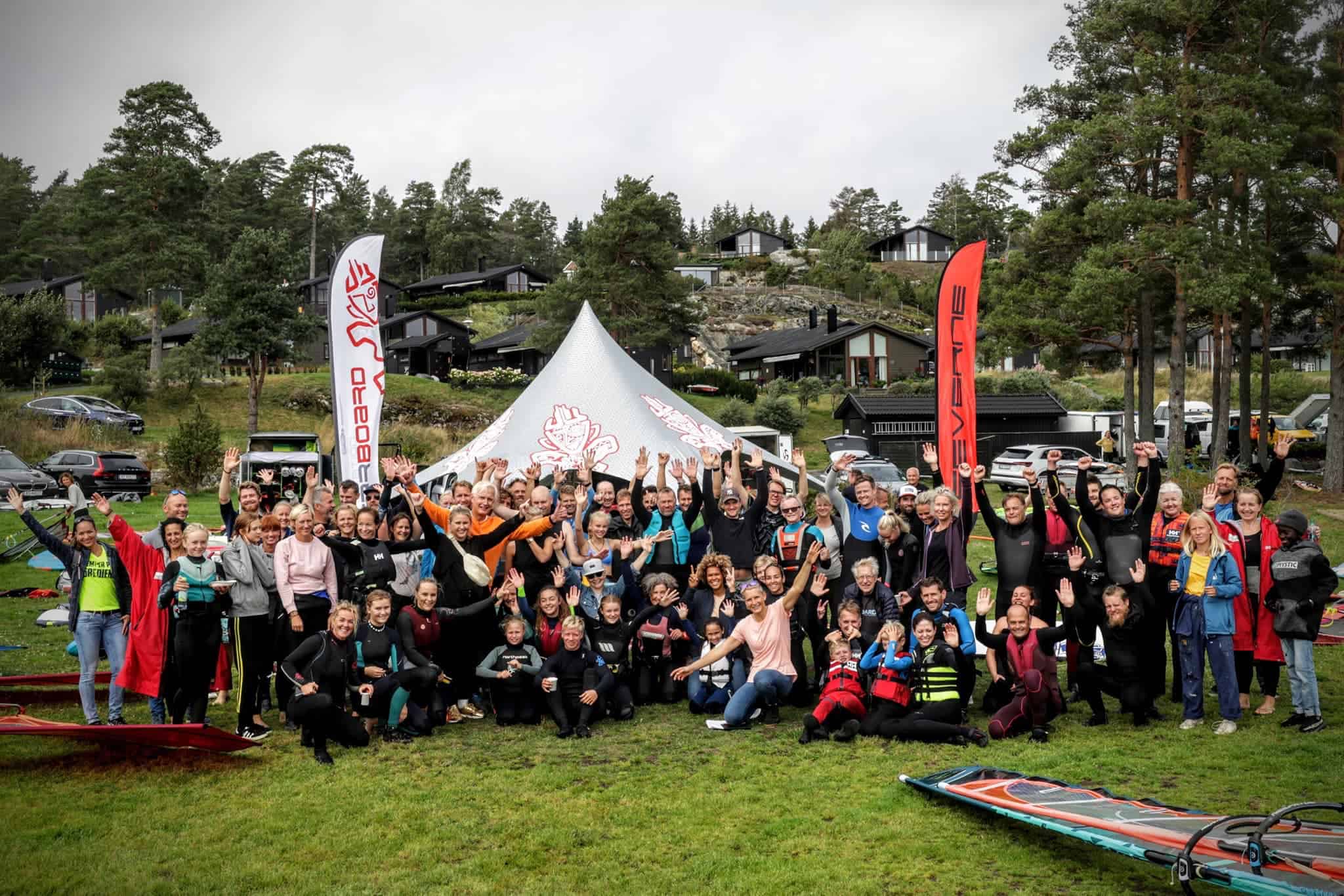
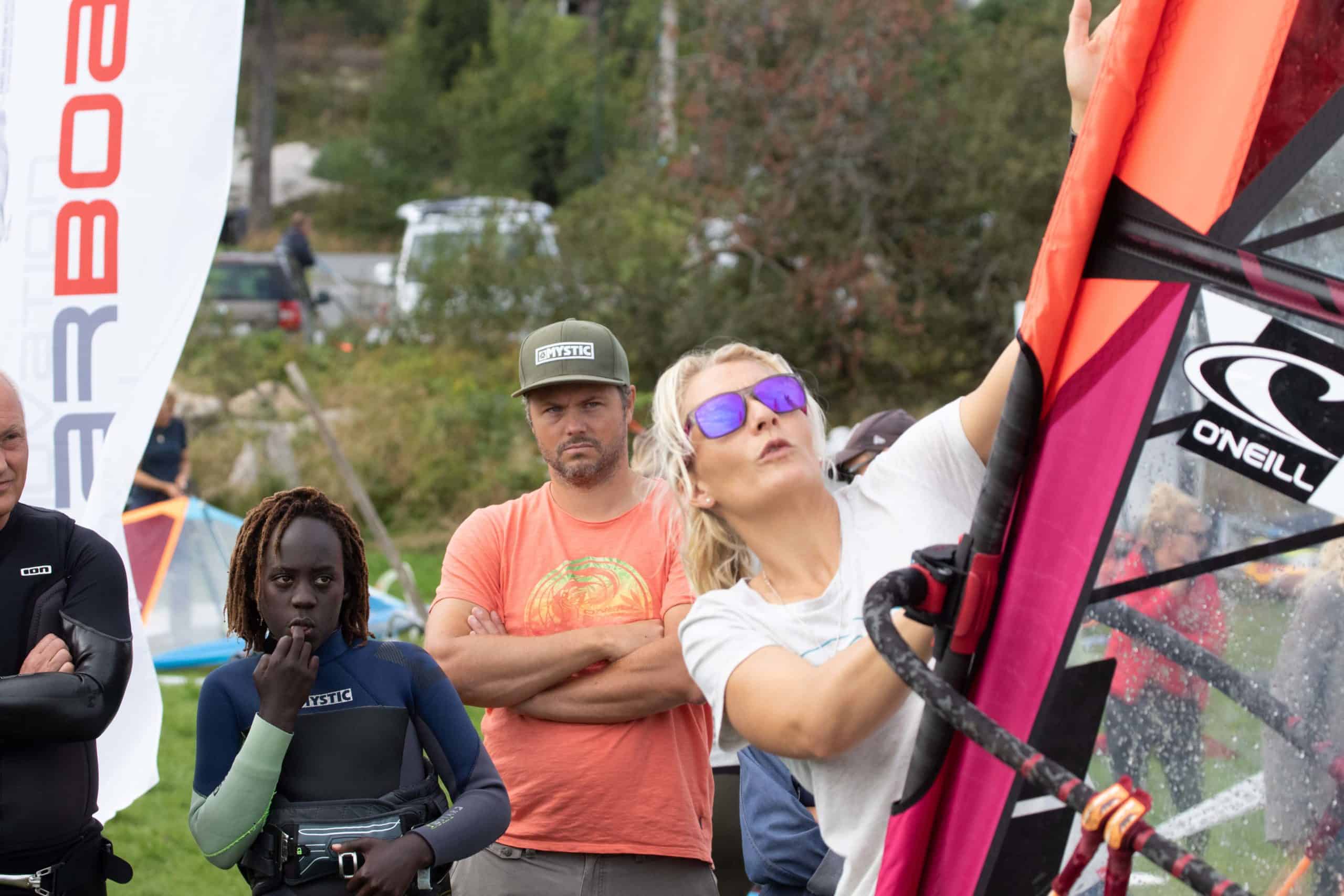
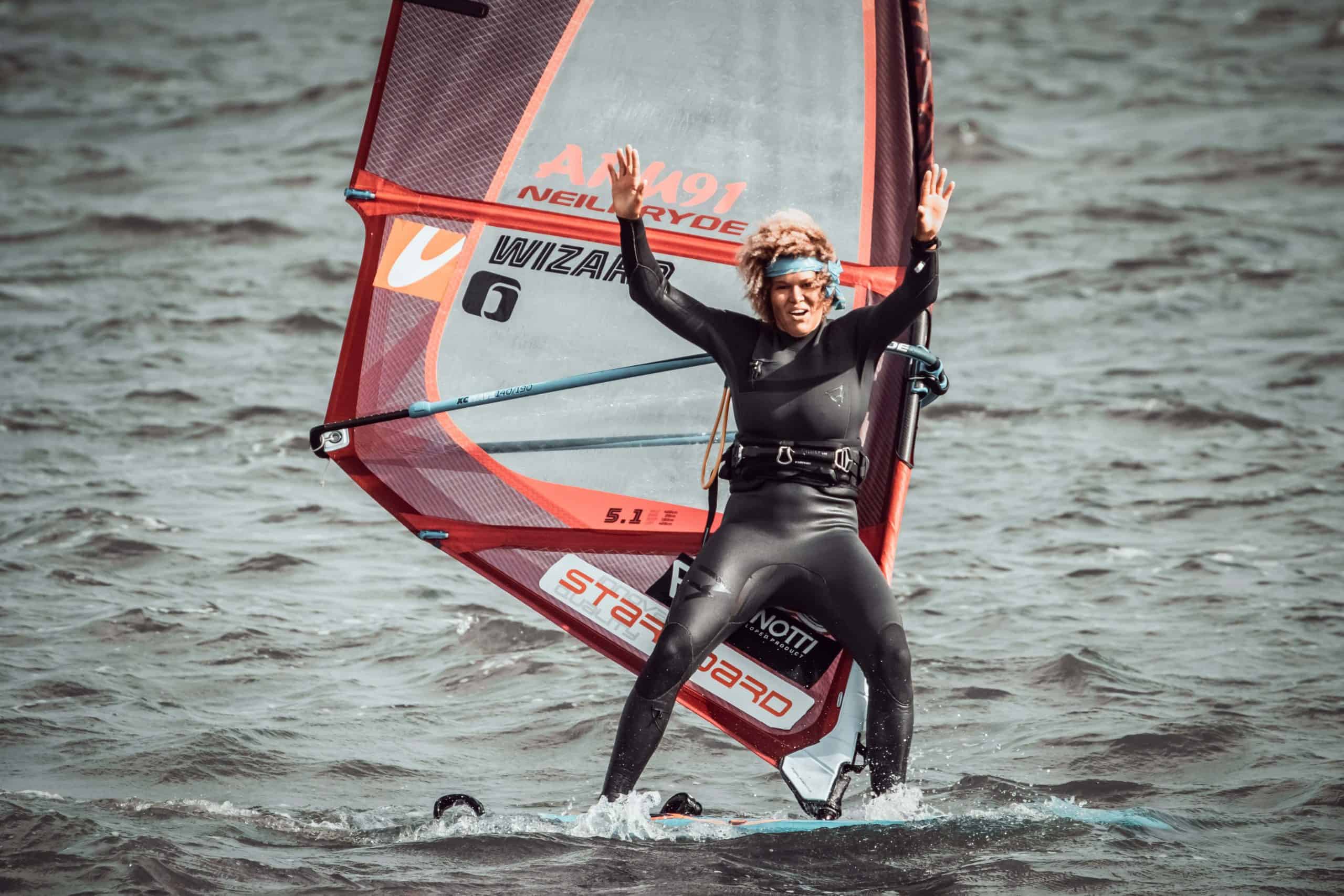
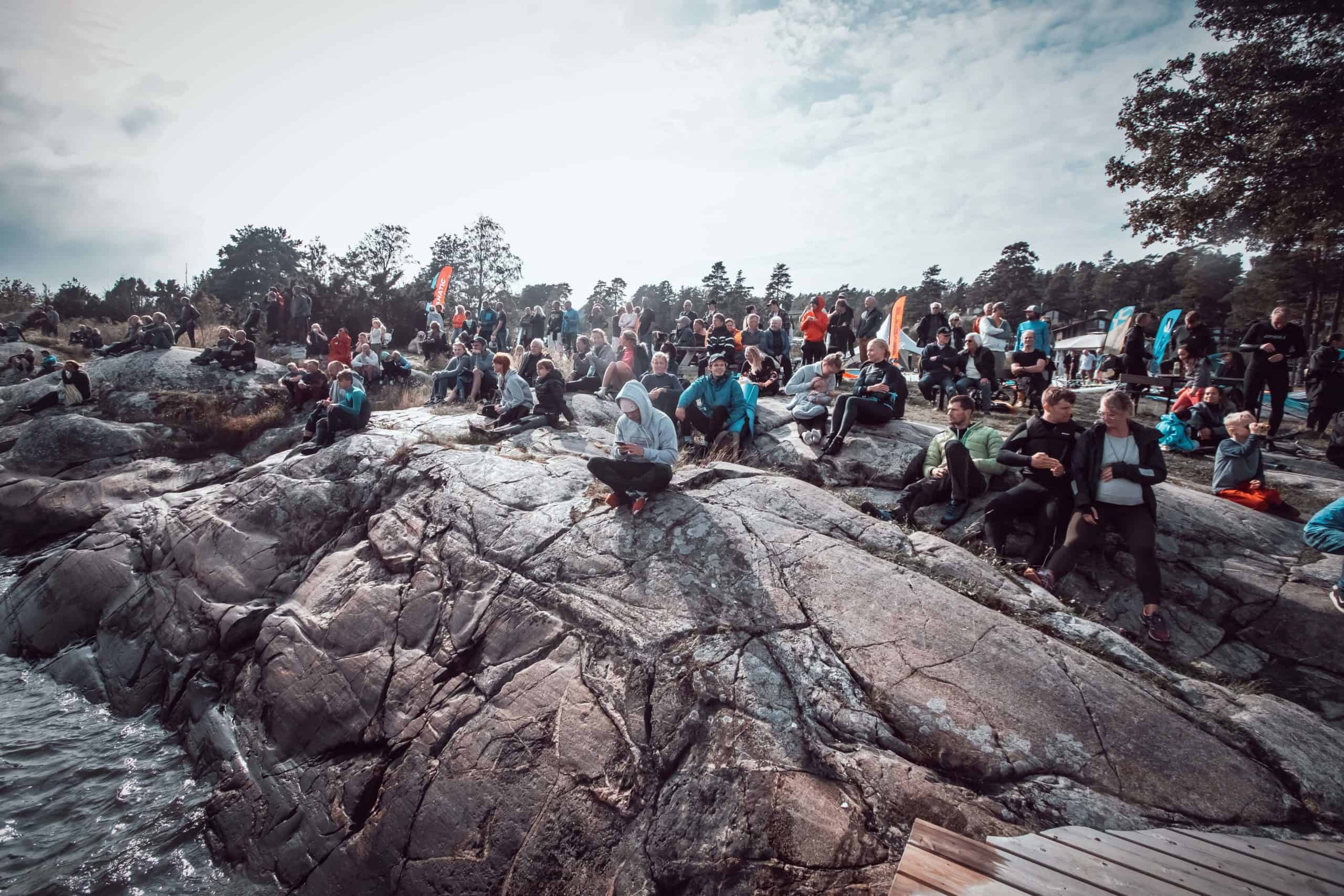
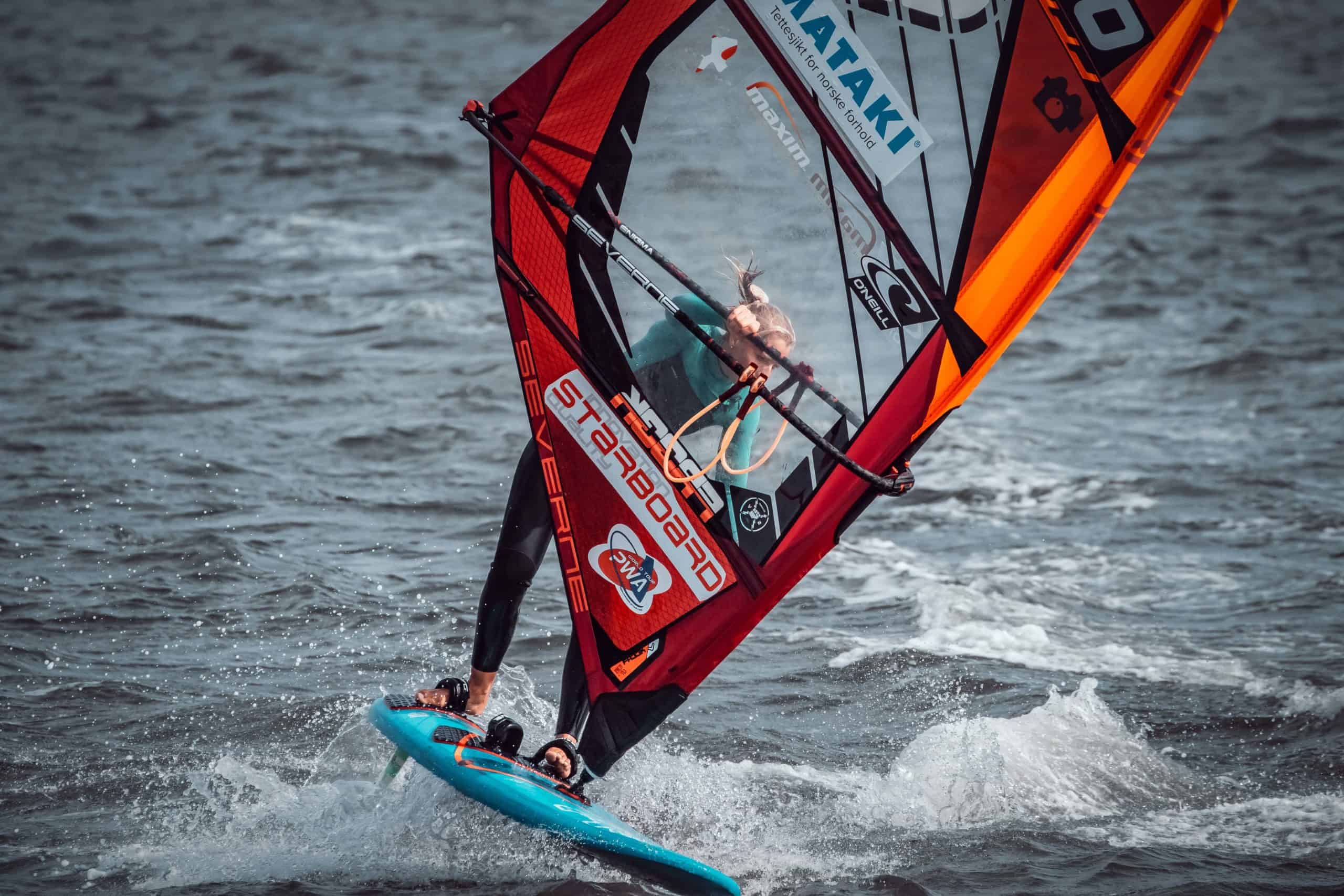 Photos by Fredrik Sørling, Emanuela Cauli and Eirik Brødholt.
Photos by Fredrik Sørling, Emanuela Cauli and Eirik Brødholt.


